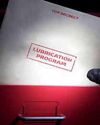
More about this ASCEND™ Factor
Factor: H7M - Goals and Rewards Systems
Level: Management and Training (M)
Stage: Lubricant Handling & Application
About: Setting and defining goals clarifies a lubrication program's objectives, and implementing rewards systems encourages staff to reach those goals.
Learn More: noria.com/ascend/
What is not measured cannot be controlled, and what is not motivated cannot be achieved; this is especially true in the field of machine reliability. The lack of clear objectives and the absence of a reward system to assess and encourage compliance with the activities of the handling and application stage leaves the success of the lubrication program open to subjective interpretation. In order to reduce faults and stoppages caused by improper lubrication, an effective lubrication program should establish clear goals, which should eventually result in, reduced lubricant consumption and increased equipment availability and reliability.
Effective programs also use rewards for meeting goals to motivate staff performing the lubrication tasks. These rewards can be either economic or take some other form. Plant managers will decide which ones to select; the important thing is that the lubrication team is motivated and has the right attitude and aptitude to achieve their daily work objectives.
Denne historien er fra July - August 2022-utgaven av MACHINERY LUBRICATION INDIA.
Start din 7-dagers gratis prøveperiode på Magzter GOLD for å få tilgang til tusenvis av utvalgte premiumhistorier og 9000+ magasiner og aviser.
Allerede abonnent ? Logg på
Denne historien er fra July - August 2022-utgaven av MACHINERY LUBRICATION INDIA.
Start din 7-dagers gratis prøveperiode på Magzter GOLD for å få tilgang til tusenvis av utvalgte premiumhistorier og 9000+ magasiner og aviser.
Allerede abonnent? Logg på

The Secrets For Implementing A Clean lubricant Program
If you could find an investment that guaranteed a return 40 times greater than your initial investment, you probably wouldn't pass it up.

MAINTAIN? REPAIR? REPLACE?
When considering the life of any asset, the question arises: what types of interventions should be planned to keep it operating or to restore operation in the event of its failure?

Engineering Reports Should Be Like Bad Movies
I'm frequently asked to review engineering reports, and I'm continually baffled by how many engineers want to take their readers on a journey instead of getting to the point.

WHY SCHEDULED OIL CHANGES AREN'T ENOUGH TO MITIGATE LUBRICANT CONTAMINATION
There are few problems more insidious or damaging to large industrial machinery than contaminated lubricant.

LUBRICATION CONTAMINATION PREVENTION
How many articles have you read, or seminars listened to, that tout the value of contamination control? If you are like me, they number in the hundreds—if not thousands. One thing about these articles and seminars that bothers me is the word “control”.

LUBRICANT CONTAMINATION PREVENTION AND MITIGATION: A Guide For Maintenance Professionals
Lubricants are essential for the smooth and efficient operation of many types of machinery, from engines and turbines to gears and bearings.

TASK-BASED TRAINING | INSPECTING A SINGLE-POINT LUBRICATOR
A single-point lubricator is a device engineered to attach to a single unit to regularly and automatically deliver a small amount of clean grease or lubricating oil to a specific area.

TOP LEADERSHIP FOCUSES FOR IMPROVED RELIABILITY AND COST REDUCTION
Here’s a scenario that may sound eerily familiar – you have a new reliability initiative.

4 KEY ELEMENTS FOR INTERPRETING AN OIL ANALYSIS REPORT
Years ago, a customer came into my office, visibly upset. He had just received his second oil analysis report for one of his Caterpillar gas engines.

ASTM ENHANCEMENTS TO MICROSCOPIC PARTICLE IDENTIFICATION AND DOCUMENTATION
In 1982, Daniel Anderson published his influential book, \"Wear Particle Atlas\", which describes, sizes, and classifies particles found in oil.